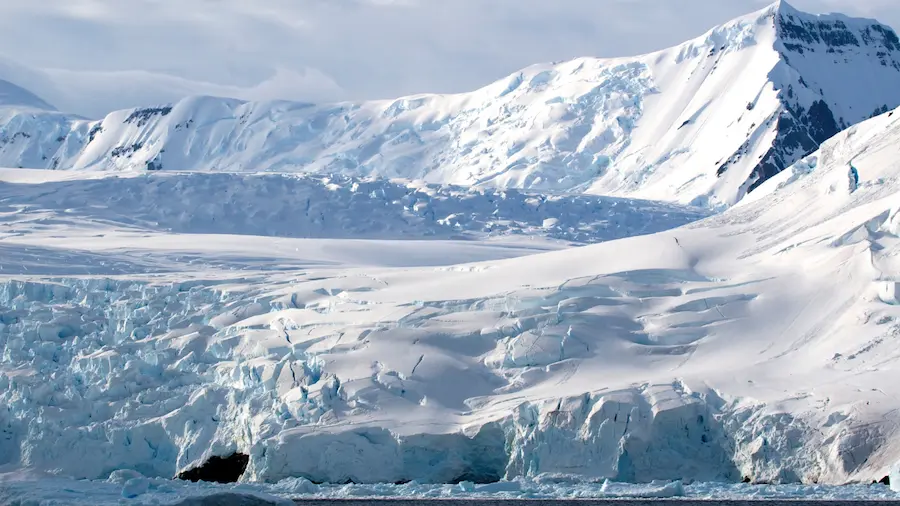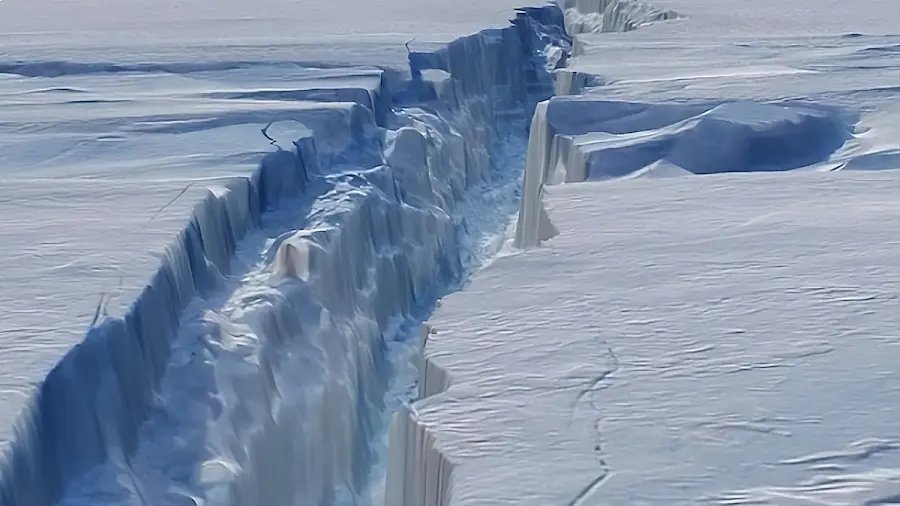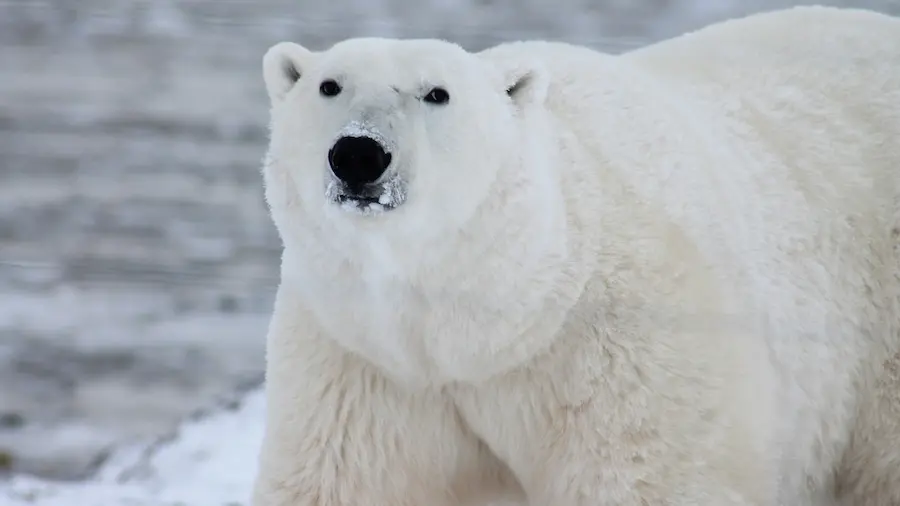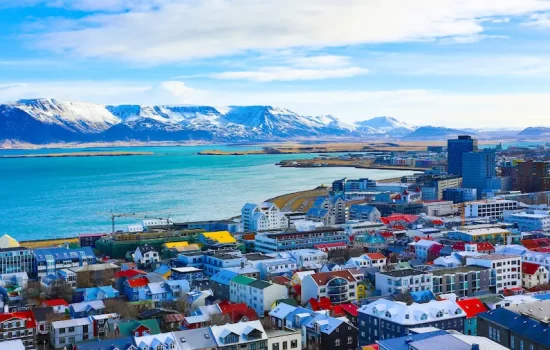Table of Contents
Welcome to Antarctica, a super cold piece of land covered in ice all around. Geographically it is located at the southern pole of the earth and is named the 7th continent. Today we will be looking at the 10 fascinating facts about Antarctica and what makes Antarctica so different and special from the rest of the world.
#1. Classified as Desert

Even though Antarctica is covered with full of icy landscapes. It is considered a Desert. Sorry I mean World’s largest Desert. Why? According to the definition of a desert, A place that receives less than 25 centimetres (10 Inches) of rain (precipitation) each year is considered a Desert. So The term ‘Desert’ does not have to do anything with sand and a hot climate and only has to do with rainfall.
In the case of Antarctica, On average, it receives rainfall of fewer than 2 inches (50 millimeters) which is even lower than the popular Sahara desert which receives rainfall of 3 inches (75 millimeters) on average each year.
#2 Treasure Chest of Ice and Freshwater
Antarctica is like a giant ice kingdom on our planet. It’s so big that it holds a whopping 90% of all the ice in the world. And not just that, it is also home to about 70% of all the fresh water on Earth.
How? Let’s understand
Think of Icebergs, those chunks of ice that break off from the glacier and float in the ocean. Well, Antarctica has a massive layer such chunk of ice that covers its land like a blanket. The layer is incredibly huge and even hard to image. But as per an estimation, if we turn all that ice into a gigantic ice cube, it would be around 6.9 million cubic miles in size. Which means an ice cube that is 6.9 million long, tall, and wide.
We usually think the biggest source of freshwater is rivers, lakes, etc. But with these stats, it is sure that most of the fresh water on Earth is locked in this desert. Isn’t this a fascinating fact?
#3 Pristine Environment
Due to its remote and naturally harsh conditions, Antarctica has successfully preserved its pure and pristine environment. The 1959 Antarctic Treaty plays a crucial role in this preservation, as it designates the continent as a scientific heaven. This treaty prohibits all the countries from doing activities such as mineral mining, military operations, and weapons testing, ensuring that the region remains accessible to all and a priceless resource for scientific exploration.
#4 Penguin Paradise

Antarctica is kind of a paradise for Penguins. It is home to various types of penguins. One of the most famous is the Emperor penguin – it’s like the king of penguins. Imagine a penguin that’s really big compared to its friends. That’s the Emperor penguin. It is also the biggest kind of Penguin.
Penguins have adapted to the harsh conditions of Antarctica and are known for their remarkable survival strategies, such as conserving heat by huddling together during blizzards blowing around.
#5 Subglacial Lakes
Underneath the thick layer of Antarctica, lies a hidden network of subglacial lakes. These lakes are special as some of them are cut off from the world for millions of years. And because they are hidden and away from sunlight, they are in the dark and have unique and extreme conditions.
But what makes the Scientist so excited is the fascinating fact that they could be the home of some unique form of life that we have never seen. It’s like treasure troves of discovery waiting to show us what kind of life can survive in the most extreme and isolated places.
#6 Icequakes

Just like we have Earthquakes in the rest of the world, Antarctica has its own version of Earthquakes known as Icequakes. But in Icequakes, instead of the ground moving, it’s the ice that cracks and moves because of its icy nature.
Seismographs can pick these icequakes and have been crucial in studying the behavior of ice sheets and their response to climate change.
#7 Rising Sea Levels and Melting Ice
Despite being an Icy landscape, Antarctica has an important role to play in maintaining global sea levels. How? Since 90% of the world’s ice and 70% of freshwater are locked in Antarctica. It means any major melting instances could cause serious sea level problems for the entire world. Especially in coastal regions.
Therefore, understanding how this ice is melting is crucial in foreseeing and reducing the effects of climate change on coastal areas across the globe.
#8 Extreme Temperature
If we talk about Antarctica and we don’t talk about extreme Temperature, it makes no sense. Antarctica is not only cold – it holds the world record for being the coldest place on Earth. Back in 1983, at the Soviet Union’s Vostok Station, the temperature dropped to an unbelievable -128.6°F (-89.2°C). That’s colder than anything you’ve probably ever experienced!
Imagine being in a place where it’s so cold that even your breath freezes instantly. That’s what it’s like to be in Antarctica sometimes. This extreme cold makes everything harder for people. And even the simplest tasks become tricky.
Despite all these challenges, people are still drawn to Antarctica for its unique and untouched environment. It’s like a frozen world waiting to be explored. So, while the extreme cold might make things difficult, it’s also what makes Antarctica an amazing place of discovery and adventure.
#9 No Timezone
Antarctica doesn’t have its own time zone. That’s because there are no native residents that live permanently on the continent. Everyone who resides there has come for some scientific research or belongs to a scientific family, participating in research. However, each workstation uses its native country’s timezone to manage tasks and operations. For example, the United States uses Eastern Standard Time (EST) while another country would use their own Timezone.
During the Midnight Sun and Polar Night in Antarctica, the extreme and unique day-night cycles can have an impact on daily activities and working timings of people.
#10 No Polar Bears

Arctic regions are native places for Polar bears. Particularly the Arctic Ocean and the surrounding Arctic Circle. They have evolved to live on sea ice and are known for their hunting skills especially seals and obtained excellent swimming skills in frozen waters.
Antarctica, on the other hand, is a completely separate and distinct continent located in the southernmost part of the Earth, opposite the Arctic. While both the Arctic and Antarctica have icy surfaces and landscapes, they have different ecosystems and species.
Whenever we see extreme cold places we presumed Polar bears. But in Antarctica, you’ll find animals such as penguins, seals, and various seabirds, but no polar bears.
Hope you liked this article. Don’t forget to checkout more such Life topics on ConceptDive
Also, learn more about Antarctica and don’t forget to check out these topics














